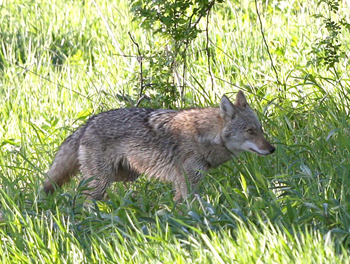
 The other day on @HamletHubRidge (our twitter name) and our Facebook page (Talk of the Town) we mentioned that someone reported seeing a grey wolf in the southern part of Ridgefield, and boy, did that get people talking, posting and tweeting!
The other day on @HamletHubRidge (our twitter name) and our Facebook page (Talk of the Town) we mentioned that someone reported seeing a grey wolf in the southern part of Ridgefield, and boy, did that get people talking, posting and tweeting!
On Twitter, we had followers retweeting and replying, but the general consensus was: It must have been a coyote that was seen in Ridgefield. Even the very popular @EastonLlama tweeted his two cents and refuted that there was a wolf in Ridgefield. He even asked the Wolf Conservation Center, @NYWolfOrg, in South Salem their thoughts.
On Facebook, the conversation was just as lively with readers’ refuting a wolf was seen in Ridgefield, and commenting on their own coyote sightings around town, the death of a beloved pet due to a coyote, the sizes, shapes and fur color of coyotes, and even mountain lion and bobcat sightings. One reader mentioned, “Must be a coyote or a dog. Wolves were once common throughout all of North America but were killed in most areas of the United States by the mid 1930s. Today their range has been reduced to Canada and the following portions of the United States: Alaska, Idaho, Michigan, Minnesota, Montana, Wisconsin and Wyoming." Another reader surmised, “People are always surprised at how big some coyotes are - most are actually hybrids, sharing wolf ancestry. There haven't been wolves in the Northeast in a hundred+ years! Don't remember my exact facts - I live near the Wolf Conservation Center in South Salem and went to a talk.”
Still wondering, “a coyote or a wolf?” According to the New Hampshire Fish and Game Commission, eastern coyotes typically weigh 30 to 50 pounds and are 48 to 60 inches long (yes, 4 or 5 feet in length!), approximately twice the size of the western coyote. Eastern coyotes have long legs, thick fur, a pointy snout, and range in color from a silvery gray to a reddish-brown. Though eastern coyotes are often mistaken for other animals, recent genetic research has attributed the coyote's larger size and unique behavioral characteristics to interbreeding with Canadian gray wolves.
Thanks to the Wolf Conservation Center and all that responded.